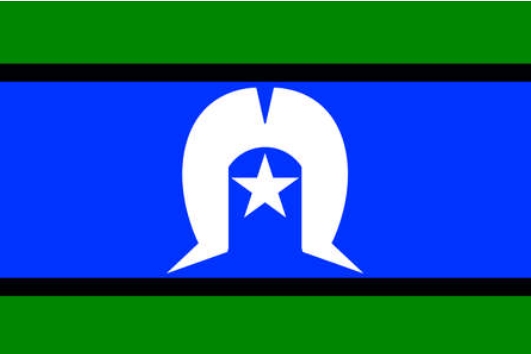Trobriand Islanders
Overview of the Trobriand Islanders
The Trobriand Islanders are the indigenous people of the Trobriand Islands (also known as the Kiriwina Islands), located off the eastern coast of Papua New Guinea.
They are famous in anthropology for their unique social structure, traditional matrilineal society, and the ritualized exchange system known as the Kula ring.
Yam cultivation and exchange play a central role in their economy and social status.
Cultural Symbols and Iconography

Yams:Symbolize wealth and prosperity. Piles of yams in front of houses indicate the family’s social status.
Canoes:Used for Kula trading expeditions, representing unity and pride within the community.
Language
Kilivila
Name: Kilivila (also called Kiriwina)
Family: Austronesian language family, Eastern Oceanic branch
Speakers: Approximately 25,000 (estimate)
Grammar: SVO order, complex noun classes, rich use of prefixes. Syllables are simple; the language is vowel-rich.
Usage:: Used in daily life, rituals, and oral traditions. Literacy rates are low, but English is taught in schools.
Script
Writing System
・Traditionally, Kilivila is an oral language with no native script.
・Roman alphabet has been adapted for educational and research purposes.
・Example alphabet: a, b, d, e, g, i, k, l, m, n, o, p, s, t, u, v, w, y
Common Expressions and Greetings
| English | Kilivila | Pronunciation |
| Hello | Osi | Oh-shee |
|---|---|---|
| Good morning | Bwalikola | Bwah-lee-koh-lah |
| Thank you | Tuta | Too-tah |
| Good night | Bwalikola Ta | Bwah-lee-koh-lah tah |
| Delicious | Yamota | Yah-moh-tah |
| Fun / Enjoyable | Yamota (used figuratively) | Yah-moh-tah |
Region
Continent: Oceania / Melanesia
Region: The Trobriand Islands (mainly Kiriwina Island), part of Papua New Guinea
Access Guide
The official currency used by the Trobriand Islanders is the Papua New Guinean Kina (PGK, K).
In traditional contexts, yams and shell valuables are also important mediums of exchange, but the Kina is used for everyday transactions.
the Trobriand Islands Region
| Departure City | Direct/Transit | Arrival Airport | Flight Time (approx.) | Reference Fare (one-way/round-trip, Economy) |
| Los Angeles | LA → Australia / Singapore → POM | Port Moresby (POM) | 22–32 hours | $1,500–2,500 |
|---|---|---|---|---|
| New York | NY → Europe / Middle East / Australia → POM | Port Moresby (POM) | 26–36 hours | US$1,800–2,80 |
| London | London → Dubai / Hong Kong / Singapore → POM | Port Moresby (POM) | 26–32 hours | £750–1,300 |
| Tokyo | Tokyo → Singapore / Hong Kong / Brisbane → POM | Port Moresby (POM) | 20–26 hours | ¥200,000–300,000 |
| Sydney | Sydney → POM (direct flights available) | Port Moresby (POM) | 6–7 hours | A$1,600–2,80 |
| Hong Kong | Hong Kong → Australia / Singapore → POM | Port Moresby (POM) | 14–18 hours | HK$8,800–15,000 |
| Shanghai | Shanghai → Australia / Hong Kong / Singapore → POM | Port Moresby (POM) | 16–20 hours | 7,800–13,500 RMB |
| Singapore | Singapore → POM (direct or connecting flights available) | Port Moresby (POM) | 11–14 hours | S$1,400–2,400 |
Note
・POM = Jacksons International Airport, Port Moresby (Papua New Guinea)
・LSA = Losuia Airport, Kiriwina Island (Trobriand Islands)
・The domestic segment from POM to LSA is typically serviced by PNG Air or small charter flights (subject to weather delays).
・Fares and travel times vary by season and route; always check with airlines or travel agents for the latest information.
Language Origins and Historical Background
Historical Origins of the Language
・Kilivila belongs to the Austronesian language family, closely related to languages across Polynesia, Melanesia, and Micronesia.
・Before European contact and missionary influence in the late 19th century, Kilivila was preserved through oral traditions.
・English has influenced the language, but Kilivila remains essential for rituals, stories, and the Kula exchange.
Traditional Games
・Yam stacking contests: Competing to build the largest yam piles during harvest festivals
・Kula canoe races: Decorated canoes race as part of the Kula expeditions
・Songs and dances (Mili’la): Storytelling and communal dancing, enjoyed by all ages
・Spear throwing, ring toss: Simple games using bamboo and wood
Note
Many games are deeply linked to ritual, blending humor with reverence.
